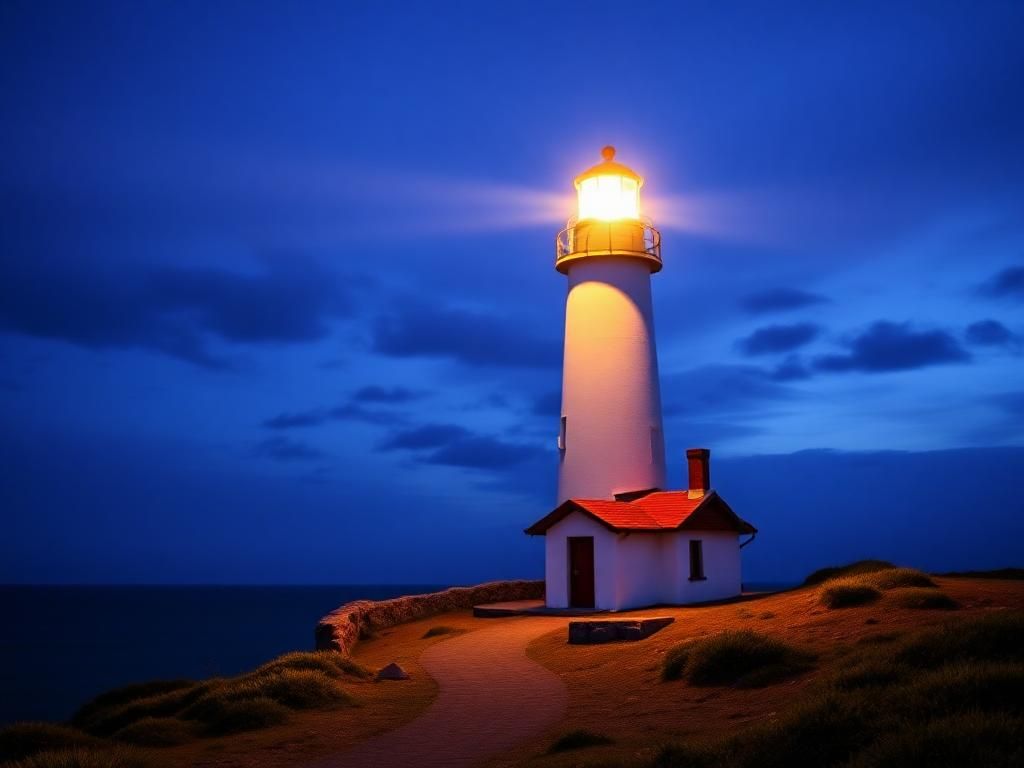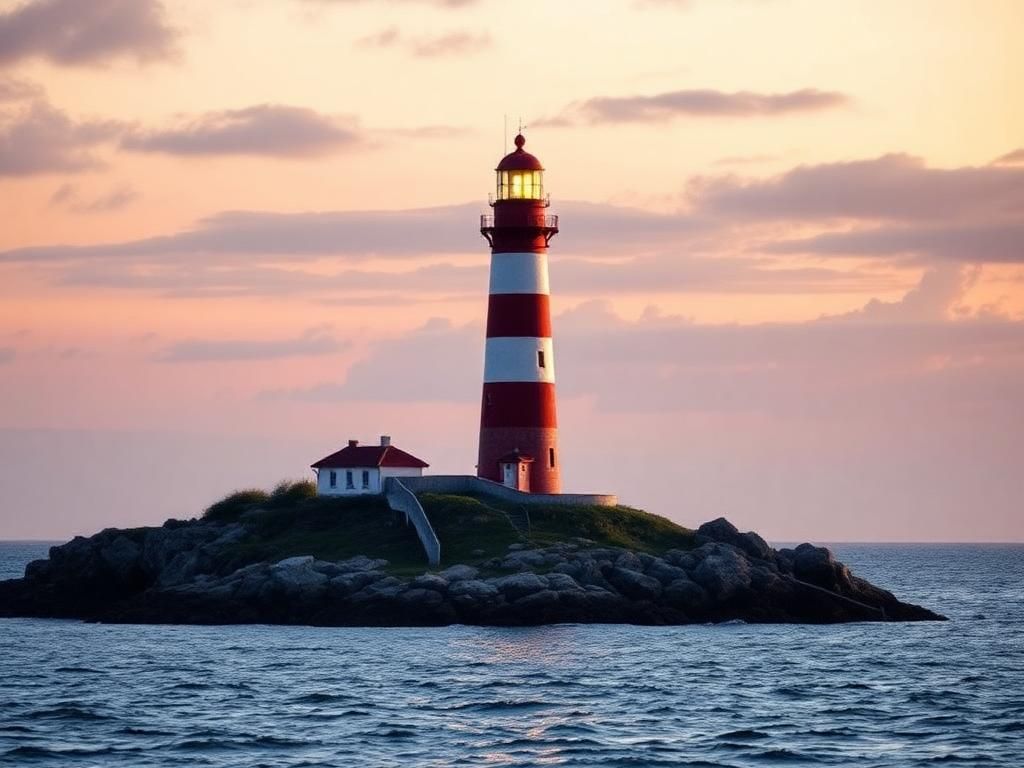Lighthouse symbolism has captivated human imagination for centuries, transcending geographical, cultural, and historical boundaries. These towering structures, often positioned along perilous coastlines, serve not only as navigational aids but also as profound symbols embedded in the human psyche. Their significance extends deeply into various cultures, representing guidance, safety, and resilience, amidst turbulent seas—both literal and metaphorical. This article will delve into the rich historical context of lighthouses, common themes of lighthouse symbolism, and their cultural interpretations, while highlighting their psychological impacts and contemporary relevance.
Historical Context of Lighthouses
Origin and Evolution
The history of lighthouses dates back to ancient civilizations, where early designs of lighthouses were rudimentary but essential for maritime navigation. The Pharos of Alexandria, built in 280 BC, is often regarded as the first recognized lighthouse, standing approximately 100 meters tall. This wonder of the world represented not only functional architecture but also the human ambition to conquer nature’s challenges.
Famous historical lighthouses such as the Eddystone Lighthouse in England, constructed in the 18th century, displayed innovative engineering techniques that influenced subsequent lighthouse designs globally. Each lighthouse tells a story of human endurance against the relentless forces of nature, chronicling a journey from simple beacons to sophisticated signal systems.
Lighthouses in Maritime Navigation
The role of lighthouses in maritime navigation has always been paramount. They serve as pivotal points for sailors, preventing shipwrecks and guiding vessels safely into harbors. Traditionally, their bright lights and unique patterns made them easily identifiable, crucial for navigating challenging waters. Over the years, advancements in technology have transformed lighthouses, integrating radar systems, GPS technology, and automated lights, which continue to enhance maritime safety.
Common Themes in Lighthouse Symbolism
Guidance and Safety
At the core of lighthouse symbolism is the theme of guidance and safety. Lighthouses stand as beacons of hope, illuminating the path for sailors during stormy nights. Their light serves not only as a warning of dangers such as rocks and shoals but also inspires travelers to find their way amidst life’s uncertainties. Much like a lighthouse, individuals may provide guidance to others during turbulent times, symbolizing the notion that there is light even in moments of despair.
Isolation and Strength
Ironically, lighthouses are also symbols of isolation. As watchtowers standing alone against a vast ocean, they represent the solitude that can foster inner strength. Many artists and writers have drawn parallels between lighthouses and personal growth, suggesting that moments of isolation can lead to profound self-discovery. The personal journey of navigating one’s challenges often unveils a lighthouse within, guiding oneself through emotional turbulence.
Watchfulness and Vigilance
Lighthouses exemplify vigilance, acting as guardians of the coast. Their constant watch over the waters mirrors the importance of being alert and prepared in life. This aspect of lighthouse symbolism encourages individuals to remain attentive to their surroundings and ready to respond to challenges, much like lighthouses who illuminate safe passages through treacherous conditions.
Cultural Interpretations of Lighthouse Symbolism

Lighthouses in Literature
Literature is rife with references to lighthouses, capturing their multifaceted symbolism. In Joseph Conrad’s “The Noddy,” for instance, the lighthouse represents a sanctuary and a way home. In poetry, lighthouses often symbolize hope and resilience in the face of adversity, serving as a powerful metaphor for life’s challenges.
Lighthouses in Art
In the realm of art, lighthouses have inspired countless artists, symbolizing tranquility and solitude. The works of artists such as Winslow Homer depict lighthouses amidst tumultuous seas, portraying their steadfastness against nature’s might. Through painting and sculpture, lighthouses convey themes of endurance and safety, often inviting viewers to reflect on their personal journeys.
Lighthouses in Religion and Spirituality
In various spiritual narratives, lighthouses epitomize divine guidance and protection. Many cultures interpret them as symbols of enlightenment, leading believers through moral and spiritual darkness. This intersection of lighthouse symbolism and spirituality highlights the universal quest for direction and meaning in life.
Psychological and Emotional Symbolism
Lighthouses as Metaphors for Life Challenges
The journey of overcoming obstacles is often likened to navigating a ship through stormy seas, wherein a lighthouse serves as a beacon of navigation. The idea of moving from darkness to light echoes throughout psychological literature, emphasizing resilience. This transition fosters a deeper understanding of oneself and the triumph over life’s challenges.
The Lighthouse as a Personal Archetype
For many individuals, lighthouses resonate on a personal level, becoming a meaningful archetype. Whether through a personal experience of solitude or as a guiding force in their lives, the imagery of a lighthouse often allows for introspection. The lighthouse becomes a metaphor for one’s personal journey, encapsulating the hopes, struggles, and triumphs encountered along the way.
Modern Interpretations and Symbolism
Lighthouses in Contemporary Culture
In today’s society, the symbolism of lighthouses persists across various mediums, from films to music. Lighthouses feature in popular culture as symbols of hope, as seen in films like “The Lighthouse” (2019), which explores themes of isolation and psychological conflict. Music artists often reference lighthouses as symbols of guidance and emotional salvation, reflecting their enduring relevance.

The Lighthouse as a Personal Symbol
Communities have engaged with the symbolism of lighthouses through preservation efforts and local projects, recognizing their importance not only as historical structures but also as cultural icons. Personal stories shared by individuals often reveal how lighthouses have served as sources of inspiration, empowerment, and unity, fostering a sense of community around shared narratives.
| Key Themes in Lighthouse Symbolism | Description | Examples |
|---|---|---|
| Guidance and Safety | Sovereigns of illumination amidst challenges | Beacons for sailors, metaphors for life hurdles |
| Isolation and Strength | Symbols of solitude that foster resilience | Personal growth stories through solitude |
| Watchfulness and Vigilance | Guardians signaling the need for alertness | Vigilance in personal and communal responsibilities |
| Cultural Interpretations | Symbolic representation in literature and art | References in poetry, visual artistry, and spirituality |
Conclusion
The exploration of lighthouse symbolism uncovers layers of meaning that resonate across cultures and experiences. Be it as a guiding force, a solitary sentinel, or a metaphor for life’s challenges, lighthouses continue to inspire reflection and introspection. They urge us to examine our own journeys, the guidance we seek, and the wisdom that comes from navigating both calm and turbulent seas.
FAQs About Lighthouse Symbolism
1. What do lighthouses symbolize?
Lighthouses symbolize guidance, safety, hope, and resilience, often serving as metaphors for life’s challenges.
2. Why are lighthouses significant in literature?
Lighthouses often serve as powerful metaphors for isolation, self-discovery, and guidance in various literary works.
3. How are lighthouses represented in art?
Lighthouses are depicted in art as symbols of strength, solitude, and the interplay between humanity and nature.
4. What does a lighthouse represent in spiritual contexts?
In spiritual narratives, lighthouses symbolize divine guidance and protection along life’s journey.
5. Can lighthouses inspire personal stories?
Yes, many individuals find personal significance in lighthouses, using them as symbols of resilience and hope in their own lives.
6. How have lighthouses influenced popular culture?
Lighthouses are prominent in films, music, and media, where they represent dreams, aspirations, and the quest for safety and guidance.
7. What are some historical lighthouses of significance?
Notable examples include the Pharos of Alexandria and the Eddystone Lighthouse, which have inspired modern designs.
8. How can one relate to lighthouse symbolism personally?
Individuals may connect with lighthouse themes through their personal experiences of overcoming challenges or finding direction during tough times.
9. Are there community efforts to preserve lighthouses?
Yes, many communities prioritize the preservation of lighthouses, recognizing their historical and cultural importance.
10. How does lighthouse symbolism relate to mental health?
Lighthouses can symbolize a guiding light through mental health struggles, representing hope and resilience amidst challenges.